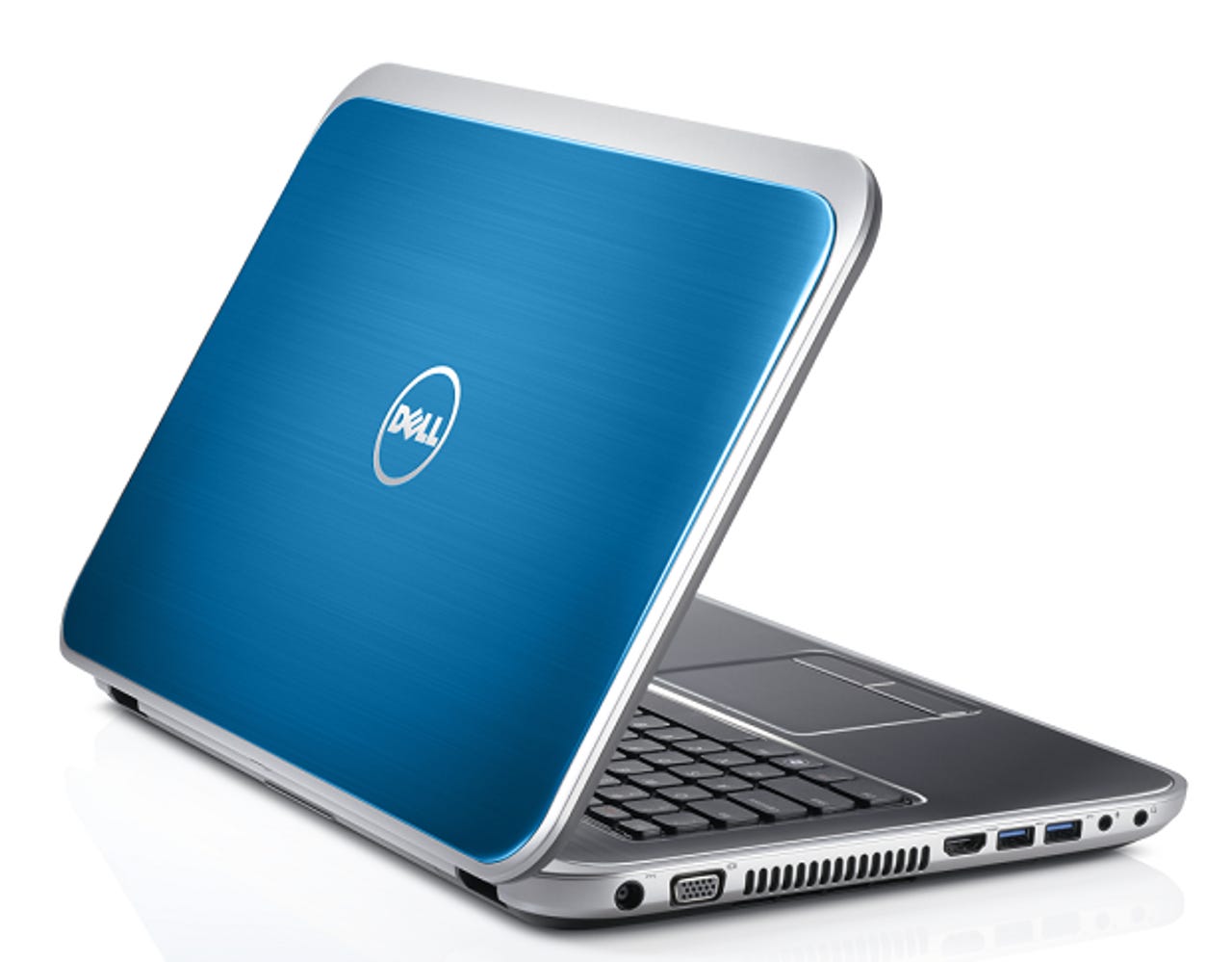The best back-to-school laptops


Dell Inspiron R series
Back to School 2013
It may not be as cheap as Dell's basic Inspiron line, but the Inspiron R series still starts at an affordable $599.99, and, unlike the Inspiron 15 and 17, offers Haswell processor options. It also features a 14-inch model (the 14R), which doesn't include a number pad like its bigger 15R and 17R siblings, but still has an optical drive in case you still use DVDs. (We'll assume most students view music CDs as ancient artifacts.) The 14R and 15R flavors include a touchscreen option, while the base configurations for the 15R and 17R include 6GB of RAM instead of the usual 4GB.
Toshiba Satellite P55t-A5202
The Satellite P55t-A5202 is part of Best Buy's "Premium Collection," but at $779.99, it doesn't have a premium price. You'll get a solid mainstream laptop for that amount: 15.6-inch 1,920x1,080 touchscreen, 8GB of RAM, 750GB hard drive, Intel Core i5-4200U Haswell processor, and DVD burner. You also get such niceties as Harmon Kardon speakers, a brushed aluminum lid, and even Nuance Dragon Assistant voice recognition software when you're too lazy to control your computer by using your hands.
Acer Aspire M5-583P-6428
Another Best Buy exclusive, the Aspire M5 might lack some of the Toshiba's sex appeal, but it includes similar specs and a cheaper price tag. The $649.99 configuration includes a 15.6-inch touchscreen, Core i5-4200U Haswell processor, 8GB of RAM, and 500GB hard drive, though it lacks an optical drive. But that helps keep the Aspire M5 fairly svelte at 5.3 pounds and under an inch thick. Media-friendly features include four speakers, Dolby Home Theater v4 technology, and Acer Purified.Voice processing that helps ensure that your video chats sound their best, whether students are chatting with old friends or their family.
Sony Vaio Fit series
Sony is known for selling premium notebooks, but the Vaio Fit, and the even cheaper Fit E, makes a nod towards those who want to spend less than a grand on a new laptop. You're still stuck with Intel's third-generation Core processors (a.k.a. Ivy Bridge), but they are capable Core i5 or i7 chips. For $749, you can get a Fit 14 with a 1,600x900 touchscreen, 4GB of RAM, 500GB hard drive and 8GB of solid-state memory to speed up booting times. The Fit 15 is similarly configured, but for $50 more you get a 15.5-inch full HD screen (1,920x1,080). You also get a choice of black, silver, or pink chassis options (the pink is Fit 14 only). The Fit E models are a couple of hundred dollars cheaper, but base configurations lack touchscreens, include slower processors, and don't include the hybrid storage option.
Lenovo IdeaPad Yoga 11S
Plenty of students will already have tablets, but for those who don't and who want to kill two birds with one device, the Yoga 11S may fit the bill. Quickly replacing the Yoga 11 that ran Windows RT and used an ARM processor, the 11S offers a full version of Windows 8 and features Ivy Bridge CPUs instead. It still retains the ability to flip between tablet and laptop modes, however, and at a starting price of $749, is probably a better deal than purchasing a Windows 8 tablet and laptop separately. You get basic notebook components like a Core i3-3229Y processor, 4GB of RAM, and 128GB solid-state drive, but the touchscreen and 11.6-inch display let you get the most out of the tablet-friendly Windows 8 start screen.
Asus VivoBook V551LB-DB71T
If that summer job paid off a little better than expected, the Asus VivoBook V551LB-DB71T could be worth the splurge. For about a grand, you'll get a laptop that packs more power than a budget portable, from the Core i7-4500U Haswell processor and 8GB of RAM to the terabyte hard drive and Nvidia GeForce G740 discrete graphics card. The 1,366x768 resolution on the 15.6-inch screen is a little disappointing, but you can make use of the touchscreen features of Windows 8 with the display. Students looking more for a desktop replacement than a cheap laptop will appreciate the VivoBook's full features, without being weighed down too much thanks to it tipping the scale at just 5.3 pounds.
Apple MacBook Air
You can't have a back-to-school laptop roundup without mentioning Apple. Detractors have long complained that you'll pay more than a similarly configured Windows notebook for the right to own a MacBook, but that hasn't stopped it from remaining the leading brand among students. While deep-pocketed power users will consider the MacBook Pro, most buyers (and their bank accounts) will be satisfied with the MacBook Air, which has recently received its Haswell processor upgrade. For $999, you'll get the 11-inch Air with double the amount of solid-state storage as last year (up to 128GB), while you'll pay a starting price of $1,099 for a 13-inch version. (You'll double the SSD capacity of either for an additional $200.) Note that those prices are before any educational discount you can score as a student (or teacher), which makes the high prices a little more tolerable.
Alienware 14
Students might be on a tight budget, but let's face it: They also make up a sizeable amount of PC gamers. If you have the money to make sure you can frag when you're not studying, Dell's new Alienware 14 strikes the right balance between portability and gaming chops. It weighs in at a little over 6 pounds, which is hardly svelte compared to an Ultrabook, but far from the brick that gaming notebooks used to be. Starting at $1,199, the Alienware 14 gives you an Intel Core i7-4700MQ Haswell processor, 8GB of RAM, 750GB hard drive, and Nvidia GeForce GT 750M graphics card. For an extra $100 you can increase the resolution of the 14-inch screen from 1,366x768 to 1,920x,1080, and of course, you can spend even more for additional RAM, a solid-state drive instead of a hard drive, a better graphics card, and so on.
Samsung Chromebook
There's plenty of debate over whether you should consider a Chromebook for your primary laptop, but students, with their limited budgets and familiarity with storing everything digital in the Cloud, can't dismiss it out of hand. For just $249, you can get Samsung's version that runs Google's Chrome operating system. While the specs are paltry -- 2GB of RAM, a mere 16GB hard drive -- that's beside the point if you just want to take notes, write papers, and surf the Web. ZDNet's James Kendrick calls the Samsung Chromebook the "best $249 you can spend." Use the money you save on textbooks or some posters to liven your dorm room walls.
HP 2000 series
If you want a dirt-cheap Windows laptop, HP's 2000 family of portables can be purchased for as low as $300. Instead of relying on Intel, the lowest-cost 2000 notebooks use AMD's E series processors, though other, slightly pricier models use Pentium or Core i3 CPUs. Even if it doesn't deliver maximum computing punch, the HP 2000 lineup still comes with 4GB of RAM, at least 320GB of hard drive space, and a 15.6-inch screen for a budget price.